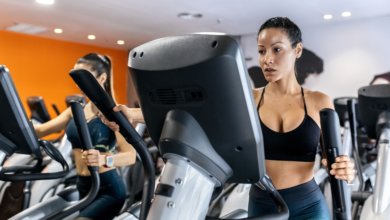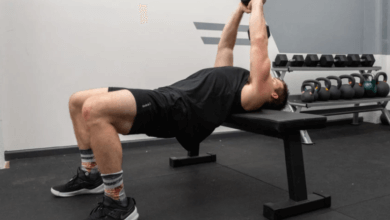Water Crunches: How to Do Them, Muscles Worked, Benefits and More
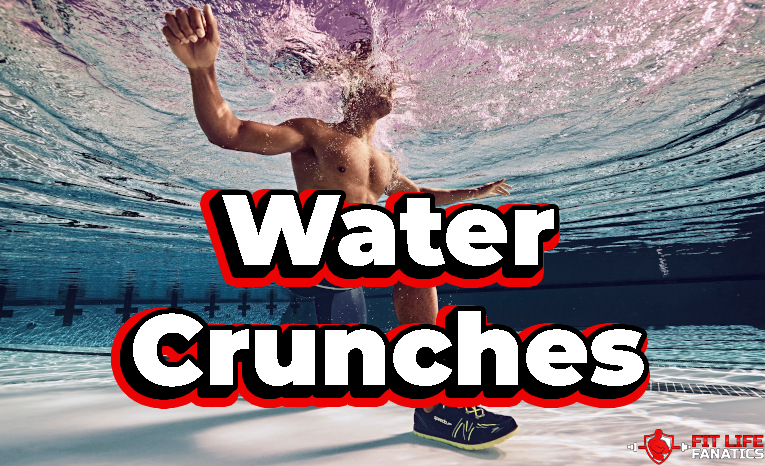
Fitness coaches these days emphasize on incorporating training drills from varied disciplines such as basketball, football, and soccer to enhance an athlete's performance. One such training move borrowed from swimming is the water crunch.
Water crunches have taken off in popularity in recent years, as more and more people have become aware of the benefits that they offer. Unlike regular crunches or cable crunches, which can put a lot of strain on your neck and back, water crunches are much gentler on your body.
But are they a passing fad or are they here to stay? Let's try and decode what the water crunch brings to the table and whether or not it is a move that you should be incorporating into your full body workout.
What Are Water Crunches?
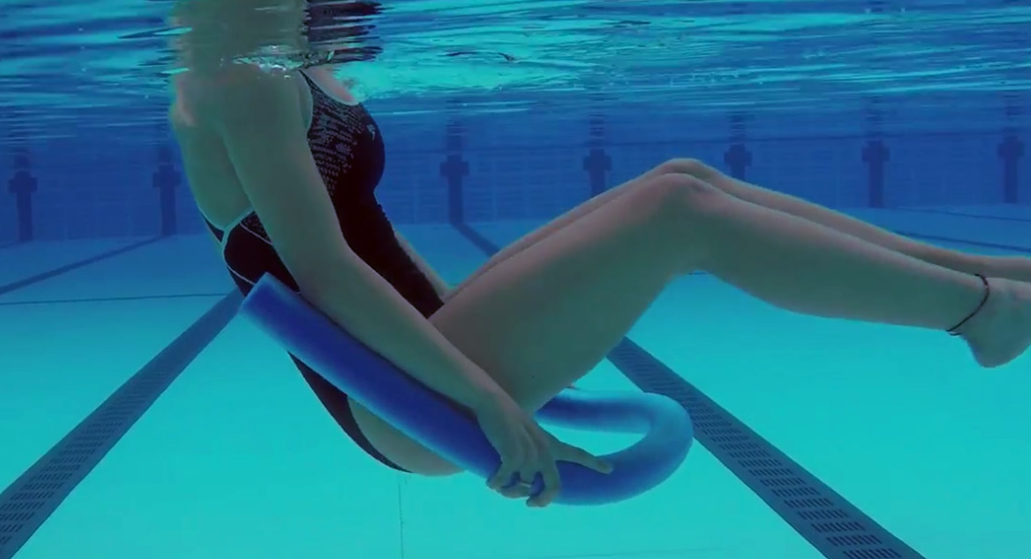
Water crunches are a variation of the regular crunch that is done in the water. As the name suggests, you need to be in a pool to do this exercise. You can do them in any depth of water, but it is best to do them in shoulder-deep water.
Water crunches can be performed free hand, or you can use a pool noodle for assistance.
The basic idea behind performing the crunch in the water is to take off the strain from your neck and back that is often associated with the regular crunch. When you are doing crunches on dry land, a lot of the tension is concentrated in your neck and back, which can lead to pain and discomfort.
But when you are doing them in water, the water provides resistance, which takes off some of the strain from your neck and back. This makes them a great option for people who have pain in these areas.
Another benefit of water crunches is that they are low impact, which means that they are easy on your joints. This makes them a good choice for people who are struggling with joint pain.
How to Do Water Crunches
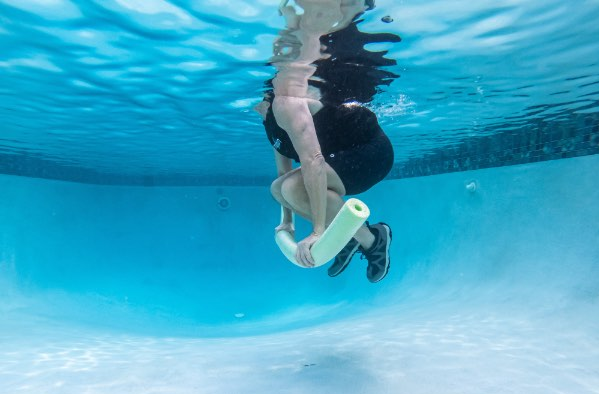
To do a water crunch, you need to start by floating on your back in the water.
Step 1 - Then, you need to bring your knees in towards your chest and place your hands behind your head.
Step 2 - From this position, you need to lift your head and shoulders off the water and bring your knees closer to your chest.
Step 3 - Hold this position for a few seconds and then slowly lower yourself back into the water.
Start by doing 3 sets of 10 repetitions and increase the number of sets and reps as you get stronger. Using a pool noodle (like this one) for floatation assistance can make the exercise easier to perform.
Here Is a Video of How To Do Water Crunches:
Muscles Worked with Water Crunches
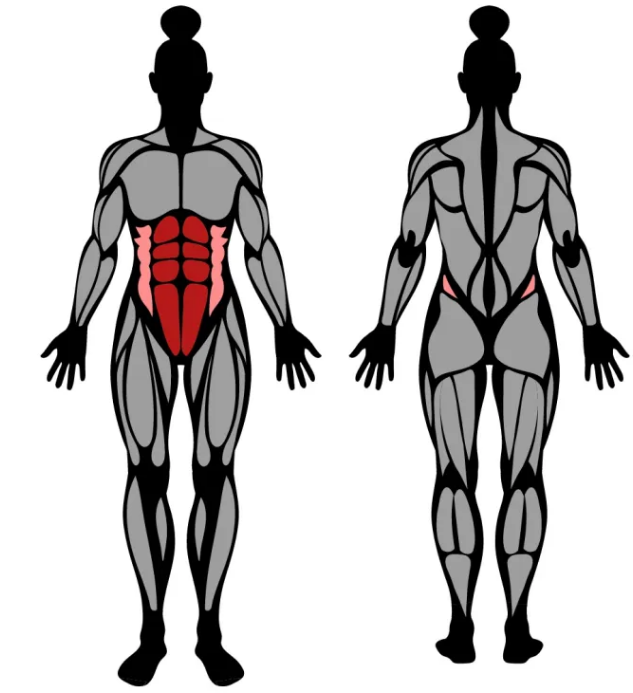
The basic premise of the water crunch is similar to the regular crunch, which means that it primarily works the same group of muscles.
Rectus Abdominis
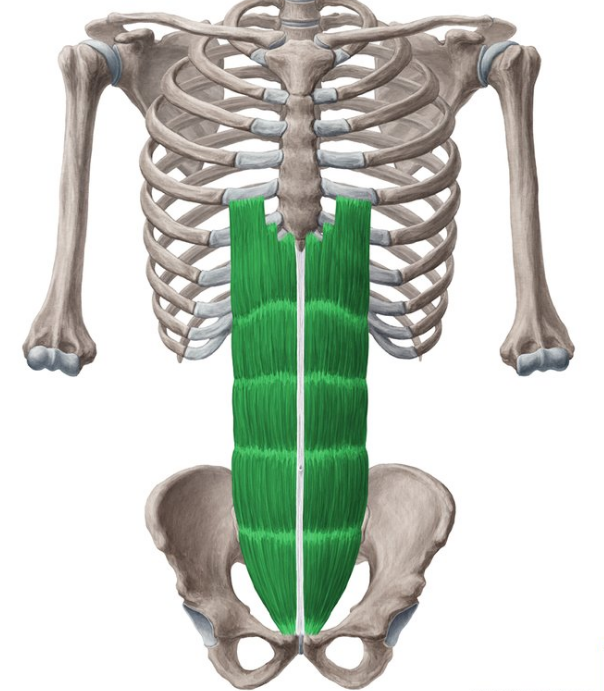
This is the muscle that runs down the center of your abdomen and is often referred to as the 'six-pack muscle.' It is responsible for the flexion of your trunk, which is what you are doing when you perform a crunch.
External Obliques
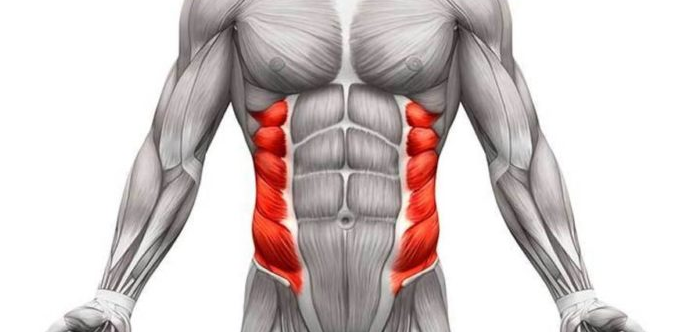
These are the muscles that are located on the sides of your abdomen and help you to bend and rotate your trunk. They also work with the rectus abdominis in stabilizing your spine.
Internal Obliques
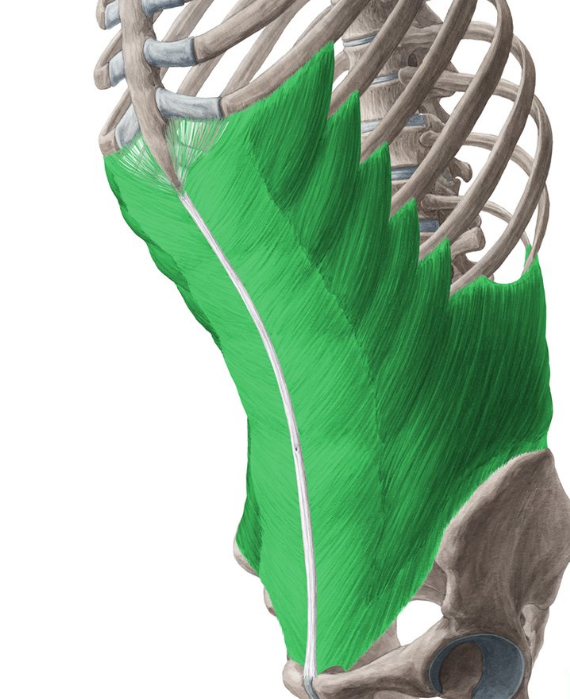
These muscles are located under the external obliques and run in the opposite direction. They work with the external obliques in bending and rotating your trunk.
How Long Should I Perform Water Crunches at A Time

Water crunches have gained popularity as a low-impact alternative to regular crunches, but that does not mean that they are easy.
In fact, water crunches can be quite challenging, especially if you are not used to working out in the water.
That being said, you should start slow and gradually increase the number of repetitions and sets that you perform. Start with 3 sets of 10 repetitions and increase the number of sets and reps as you get stronger. This will help you to decide number of crunches a day.
If you find that your form is suffering, take a break or reduce the number of repetitions and sets that you are performing.
Performing water crunches for too long can lead to fatigue and could cause you to lose form, which increases the risk of injury.
Pro Tips on Water Crunches to Get Best Results

Recent research reveals that exercising in water can add up to 15 times the resistance than performing the similar standing oblique crunches or double crunches. While exercises may look seemingly easier to perform in water, they are actually more difficult and challenging.
This is why it is important to start slow and gradually increase the number of repetitions and sets that you perform.
Warmup
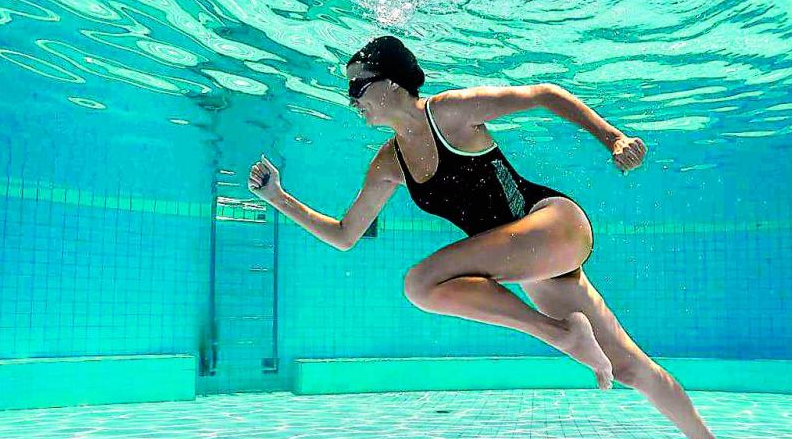
Water walks, where you walk as fast as you can in the pool are an excellent warm up exercise. They help your body get used to the resistance and will rev up your heart rate.
Wear the Right Gear

Make sure that you are wearing the right gear when you exercise in the pool. This includes swimwear (best for female) that fits properly and does not restrict your movement. You may also want to wear a swimming cap (if you are a female then check this one) and unisex goggles (check this one) to keep your hair out of your face and protect your eyes from the chlorine in the water.
Getting Used to Floating Exercises
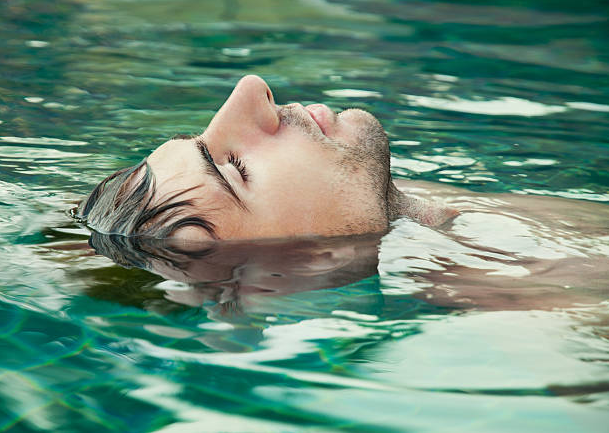
When you perform exercises in the water, you need to get used to the feeling of floating. This can be difficult at first, but it is important to relax and trust that you will not sink.
If you are struggling with this, start by holding on to the pool edge or a floatation device like a noodle. As you get more comfortable, let go of the noodle and try to float on your own.
Common Mistakes to Avoid While Doing Water Crunches
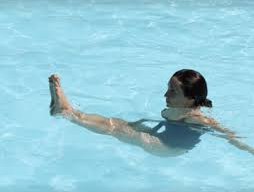
Here are a few mistakes that you should avoid while performing water crunches:
Not Keeping Your Abs Engaged
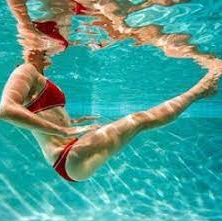
One of the most common mistakes people make when doing water crunches is not keeping their abs engaged. This can lead to lower back pain and strain on your spine. Make sure that you are contracting your abs throughout the entire exercise.
The Integrity of Your Spine
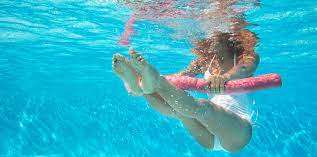
Regardless of the type of crunch you are doing, it is important to maintain the integrity of your spine. This means that you should not round your back or tuck your chin to your chest. Keep your back straight and your chin up throughout the exercise.
Not Going Slow Enough
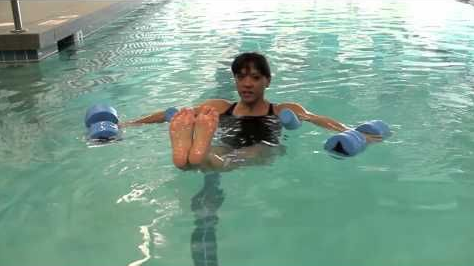
Another mistake people make when doing water crunches is not going slow enough. Remember, water offers resistance, so you do not need to move quickly to get a good workout. In fact, moving too fast can lead to sloppy form and puts you at risk of injury.
Benefits of Water Crunches
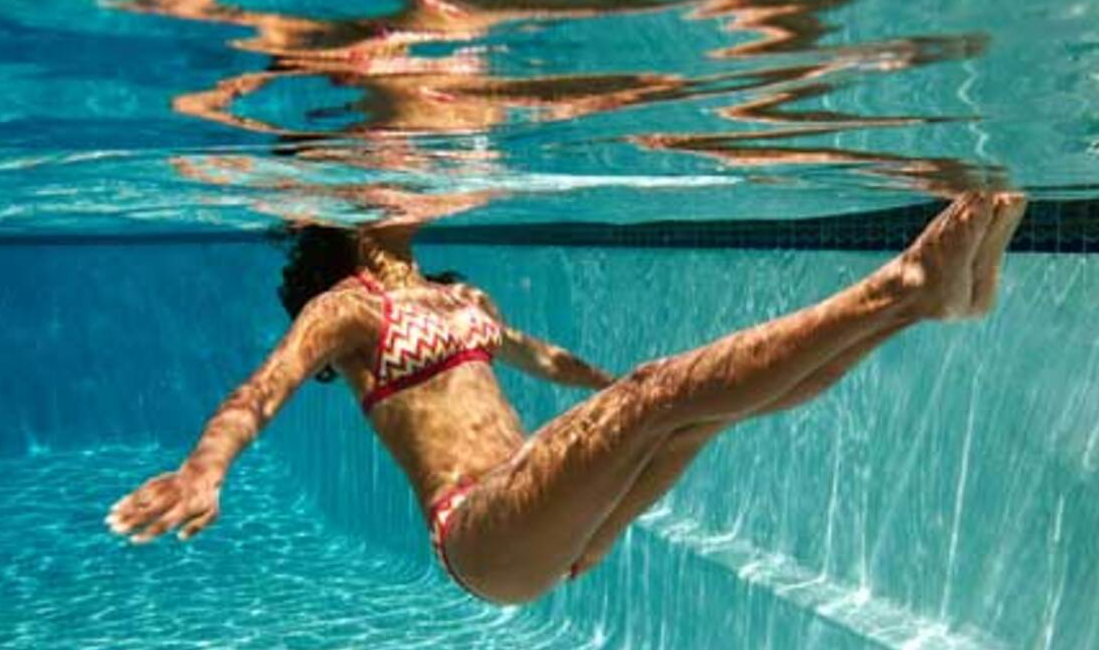
Water crunches are a great way to work your abdominal muscles without putting strain on your neck and back. Star plank is another popular and more effective exercise that targets abdominal muscles. Here are other benefits:
Added Resistance
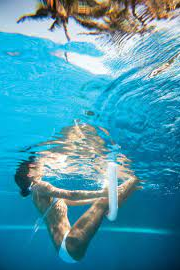
As mentioned earlier, water offers resistance, which can make exercises more challenging and effective.
Low-Impact
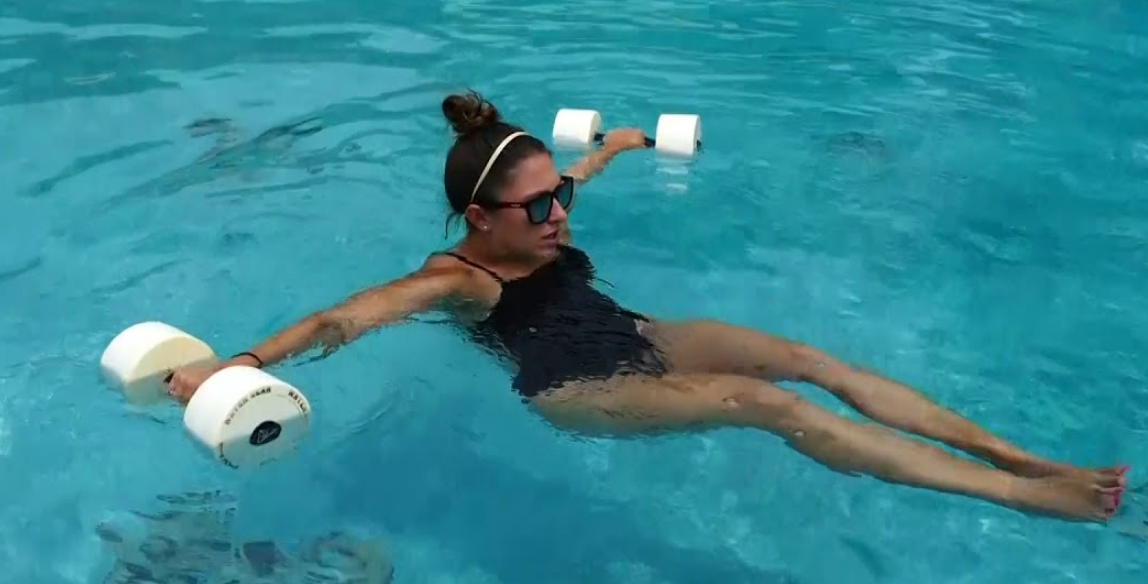
Water crunches are a low-impact exercise, which means they are easy on your joints. This makes them a good choice for people with joint pain. In fact, research points to the benefits of water-based exercise for people with osteoarthritis.
Great Calorie Burner

When you do the water crunch, you are automatically recruiting more muscles to stabilize your body, which means you are burning more calories.
Water crunches are also good for your heart. They help to increase your heart rate and improve cardiovascular health.
FAQ About Water Crunches
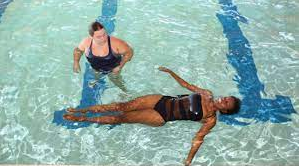
Now we answer a few common questions about water crunches.
Q. How Many Calories Do Water Crunches Burn?
A. Be it water crunches or exercises performed on land, the number of calories burned depend on several factors like age, intensity of workout, weight and muscle mass.
Its impossible to give an accurate estimate, However, a 155-pound person can expect to burn approximately 80 calories by doing 25 water crunches at a moderate intensity. This is more effective even if you do 100 regular crunches a day.
Q. Is It Okay to Stop and Take Rest?
A. It absolutely is. Just because you're in the water doesn't mean you have to exercise at a certain pace or for a certain amount of time. If you need to take a break, do it by all means.
Q. How Long until I See Results?
A. That depends on your starting point and what you mean by results. If you are gunning for a six pack abs or 10 pack abs, that could take weeks or months of dedication and consistency. But doing water crunches regularly will help tone your abdominal muscles and will speed up the process.
Q. What Are Water Crunches Good For?
A. Water crunches are good for toning your abdominal muscles and improving cardiovascular health. They are also a low-impact exercise, which makes them ideal for people with joint paint too.
Q. Can You Lose Weight Doing Water Crunches?
A. While they can help you burn calories and lose weight, water crunches alone are not enough. You need to couple them with a healthy diet and other full body workout such as one punch man workout. We recommend working with a certified trainer to help you create a well-rounded workout routine.
Q. Do Water Crunches Work the Abs?
A. Yes, water crunches are an effective way to tone your abdominal muscles. They work the same muscles as traditional crunches, but because water offers resistance, they can be more challenging and effective.
Related Readings:
- Does Swimming Make You Taller? Or Is This Just a Myth?
- Roman Chair Sit-ups – Beginner Guide
- T Bar Row Exercise Guide – How To, Muscles Worked, Alternatives, Mistakes to Avoid
- Exercise To Reduce Belly Fat for Female At Home
- Heavy Duty Rowing Machines – Our Top Rowers with High Weight Capacity
- Best Cardio Machines For Weight Loss In 2022 – My Top Budget Friendly Picks
References:
- https://pubmed.ncbi.nlm.nih.gov/25853876/
- https://www.bodyrock.tv/blogs/insider-news/research-study-reveals-the-best-exercise-for-targeting-core-strength-and-definition-and-it-s-not-crunches-or-sit-ups
- https://www.ncbi.nlm.nih.gov/pmc/articles/PMC8430467/
- https://www.ncbi.nlm.nih.gov/pmc/articles/PMC5978883/
Ben Mayz
Hi there! I'm Ben, main author and chief editor at Fitlifefanatics.com. I have been obsessed with Strength Training and Fitness for 18 years now.
My passion for living a happy fit lifestyle is what made me realize that fitness is what I wanted for my future.
I went on to earn my Masters in Sports Training & Biomechanics.
My passion for Strength training & fitness and my love of helping others is what made me start Fitlifefanatics.
Here, myself, and a team of specialist aim to provide the most accurate, and actionable information possible in hopes to help foster the fitness community forward.
You can learn more about Fitlifefanatics on our About Page
